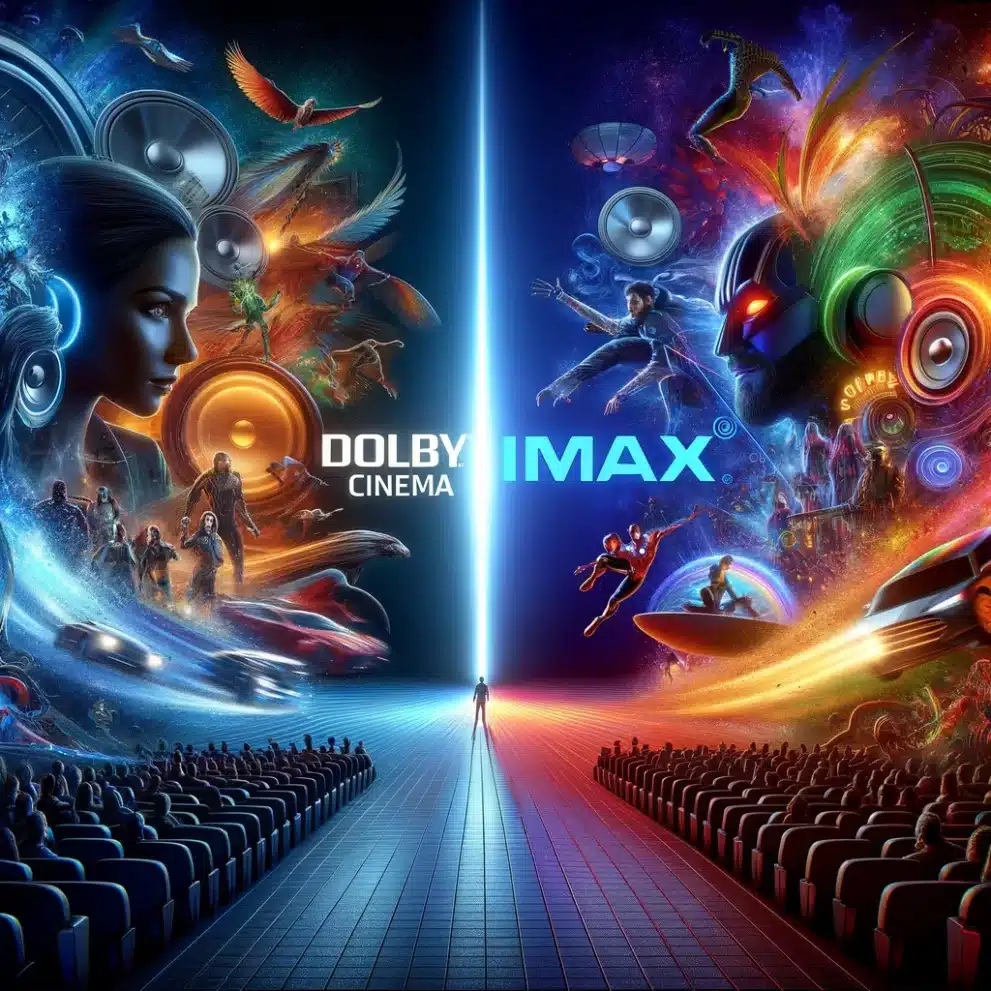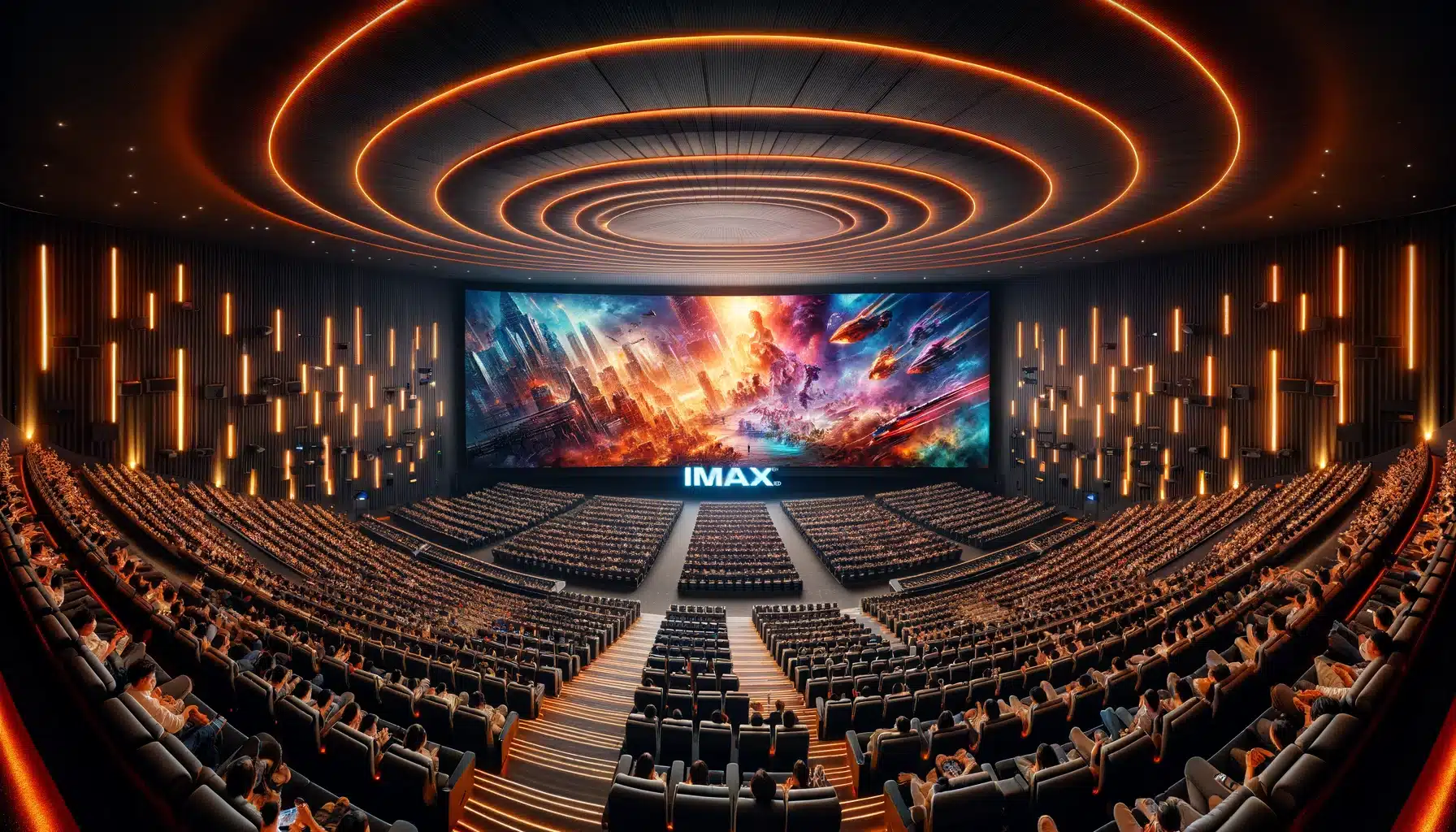
Dolby Cinema vs. IMAX
Is Dolby better than IMAX?
Dolby Cinema technology represents a significant advancement in the cinema experience, merging state-of-the-art visual and audio technologies to create an immersive viewing experience. At the heart of Dolby Cinema is Dolby Vision, a proprietary HDR (High Dynamic Range) video format that offers enhanced brightness, contrast, and color. Unlike standard projection systems, Dolby Vision can display a wider range of colors and a greater degree of detail in both bright and dark areas of the picture. This is achieved through the use of dual laser projectors, which not only provide exceptional brightness and color accuracy but also increase the overall picture resolution.
Complementing the visual experience is Dolby Atmos, an innovative audio technology that adds a height dimension to sound. Traditional surround sound systems deliver sound from the sides and rear of a cinema, but Dolby Atmos introduces overhead speakers, allowing sound to move around the audience in three-dimensional space. This creates a more realistic and enveloping sound environment, where sounds can be precisely placed and moved within the cinema, mirroring the on-screen action.
The physical design of Dolby Cinema theaters also plays a crucial role. These theaters are meticulously designed to ensure optimal viewing and listening experiences. The seats are arranged to provide an unobstructed view of the screen, and the walls are treated to reduce unwanted sound reflections. This attention to detail extends to the acoustic materials used in the theater, which are selected to absorb and dampen ambient noise, thereby ensuring that the focus remains purely on the film’s audio and visual presentation.
Overall, Dolby Cinema offers a comprehensive, high-fidelity cinema experience, combining cutting-edge visual technology with revolutionary audio design, all wrapped in an environment meticulously tailored for entertainment. This combination not only enhances the realism and immersion of cinematic storytelling but also sets a new standard for the audience’s engagement and experience
IS IMAX BETTER THAN DOLBY?
IMAX technology is designed to deliver an intensely immersive cinema experience, distinguished by its superior picture and sound quality. The core of IMAX’s uniqueness lies in its film format, which is significantly larger than traditional film formats. This larger size allows for higher resolution images, ensuring exceptional clarity and detail. IMAX theaters are equipped with specialized projectors capable of displaying this larger format. These projectors are either high-resolution digital or traditional film projectors, depending on the venue, and they offer exceptional brightness and sharpness.
The IMAX experience is further enhanced by the design of the theater itself. IMAX theaters typically feature larger, curved screens that fill the viewer’s field of vision more completely than standard screens. This curvature reduces distortion and immerses the viewer more fully in the film. The size and shape of the screen, coupled with the positioning and angle of the seats, are engineered to maximize the viewer’s field of view, ensuring that even peripheral vision is engaged.
In terms of sound, IMAX theaters employ a bespoke, high-quality sound system. This system is finely tuned to the specific acoustics of each theater, ensuring clear and precise audio. The sound system is designed to produce an extended frequency range, which means audiences can hear deeper lows and higher highs, adding to the immersive experience.
Beyond the technical aspects, IMAX also involves a specific filmmaking process. Films shot with IMAX cameras, or those digitally remastered for IMAX, use an expanded aspect ratio, offering more picture at the top and bottom of the frame compared to conventional films. This expanded field of view can make a significant difference in how immersive the film feels.
Overall, IMAX technology is about creating a more engaging and powerful cinematic experience, achieved through a combination of advanced projection technology, theater design, and a unique approach to film production. This combination draws viewers into the world on the screen in a way that extends beyond the capabilities of standard theaters, creating a sense of awe and wonder.
DOLBY VS. IMAX, COMPARED
When comparing Dolby Cinema and IMAX, both technologies offer enhanced cinematic experiences but have distinct features, each with its own positives and negatives:
Dolby Cinema:
- Positives:
- Dolby Vision: Offers a high dynamic range with deeper blacks and brighter whites, resulting in superior contrast and color vividness.
- Dolby Atmos: An advanced sound system that provides a three-dimensional audio experience, with sound that can move in any direction in the theater.
- Laser Projection: Ensures consistency in image brightness and quality over time.
- Theater Design: Optimized for both sound and visual experience, with comfortable seating and strategic layout for unobstructed viewing.
- Negatives:
- Availability: Fewer Dolby Cinema theaters compared to IMAX, limiting accessibility.
- Content Limitation: Not all films are mastered in Dolby Vision or Dolby Atmos, which can limit the availability of movies optimized for this format.
IMAX:
- Positives:
- Screen Size: Larger and often curved screens that fill more of the viewer’s field of vision for an immersive experience.
- Resolution: High-resolution imaging, especially in theaters using 70mm or IMAX digital projectors.
- Aspect Ratio: Films shot with IMAX cameras have an expanded aspect ratio, offering more visual content on screen.
- Global Availability: More widespread, with a larger number of IMAX theaters worldwide.
- Negatives:
- Sound Quality: While IMAX sound systems are high-quality, they may not provide the same level of immersive, directional sound as Dolby Atmos.
- Variability in Experience: Not all IMAX theaters are created equal; experiences can vary significantly depending on whether the theater uses digital or film projection, and the size and curvature of the screen.
- Cost: Producing and projecting films in the IMAX format can be more expensive, which might translate to higher ticket prices.
In summary, Dolby Cinema excels in providing a high-quality audio-visual experience with superior contrast, color, and immersive sound, but is less widely available and may have limited content. IMAX offers a more uniformly immersive visual experience due to its larger screens and is more widely available, but there can be variability in quality, and it might not match Dolby Cinema’s audio experience. The choice between the two often comes down to personal preference and the specific film being viewed.
WHO ELSE COMPETES WITH DOLBY AND IMAX?
In the realm of advanced cinema technologies, there are several competitors to Dolby Cinema and IMAX, each offering unique features and experiences:
- RealD Cinema: Specializes in 3D cinema technology and is known for its crisp, bright 3D images. RealD is one of the most widely used 3D cinema systems globally and competes directly in the 3D market segment.
- 4DX: Developed by CJ 4DPLEX, 4DX theaters provide a multisensory experience, including moving seats, wind, mist, scents, and other effects synchronized with the movie, offering an immersive experience that extends beyond the screen.
- D-BOX: Similar to 4DX in providing a motion-synchronized experience, D-BOX focuses on the integration of motion seats with the film’s action, providing a tactile dimension to movie viewing.
- ScreenX: Another innovation by CJ 4DPLEX, ScreenX offers a 270-degree viewing experience by projecting additional content onto the side walls of the theater, creating an immersive panoramic film experience.
- RPX (Regal Premium Experience): Developed by Regal Cinemas, RPX theaters offer high-quality digital projection with enhanced sound and comfortable seating. RPX competes as a premium cinema experience but is typically less expensive than IMAX or Dolby Cinema.
- Sony Digital Cinema 4K: Focuses on providing high-resolution 4K projection technology, offering clarity and detail that surpass standard digital projection systems.
- Barco Escape: A multi-screen format similar to ScreenX, with additional screens on the sides of the theater, creating an immersive panoramic view. This technology is used in select theaters for specific scenes in movies.
- Dolby 3D: A direct competitor to RealD, Dolby 3D uses a different approach to 3D technology, emphasizing color fidelity and reduced ghosting for a more comfortable viewing experience.
- IMAX with Laser: A specific upgrade within the IMAX family, offering enhanced picture quality with laser projection technology, improved color, and increased brightness and contrast.
- AMC Prime: AMC’s premium theater experience, combining power-reclining seats, enhanced sound, and superior projection quality.
Each of these competitors offers unique features targeting different aspects of the cinema experience, from immersive 3D visuals and multi-sensory experiences to high-resolution projection and enhanced comfort. The choice between these options typically depends on the preferences of the movie-goer and the type of movie being viewed.






 Share
Share Tweet
Tweet Share
Share




Comment